{Bohm} : The Future of Creativity
Disclaimer: The information used in this transcript of a spoken interview with the scientist David Bohm is re-formed, structured & extended by M.
The names used in this interview are partly fictitious, party real. Artwork is added for your understanding. We discuss the topics of Art, Science, Creativity & Society.
Science Philosophy
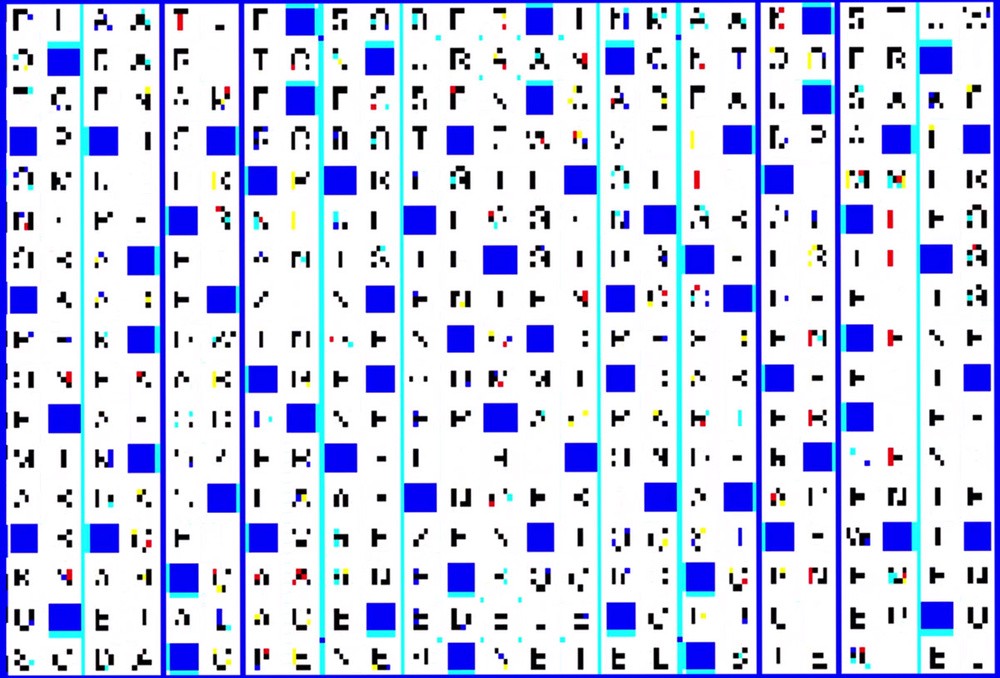
“M: First of all I’d like to welcome you to Transylvania.”
D: Thank you M.
M: Let's start right in the core.
How is it that science has taken the track of becoming specialized and fragmented?
D.: Well, I think it happened gradually, in a historical process. The early day scientists regarded themselves as natural philosophers. They were interested in the whole of existence, and they were pursuing their interest scientifically. They were very often interested in broader questions.
There was a gradual increase of specialization, concentrating more on techniques. It resulted in the development of a very complex apparatus. With complex, I mean highly organized institutions for carrying out expensive research, requiring many people to work together. This work has to be organized hierarchically.
Also a lot of it became more and more abstract. It became less clear how this would connect to those topical-philosophical-conceptions.
At the same time the philosophical standpoint shifted against metaphysics. Science became more a matter of organizing facts in a logical construct, thus so, to make future predictions. I think the interest in broad ideas gradually decreased, it’s almost as if the philosophical component which science really began with, disappeared.
M: Wasn’t natural philosophy the foundation of science? Inseparable from art.
D: As it happens, the whole of civilization has been characterized by the transient breaking up, into parts, into fragments*, which don’t have much to do with each other. Science not only isolated itself from other areas of life, but also within science it has broken up into parts. These parts only operate distantly related to each other.
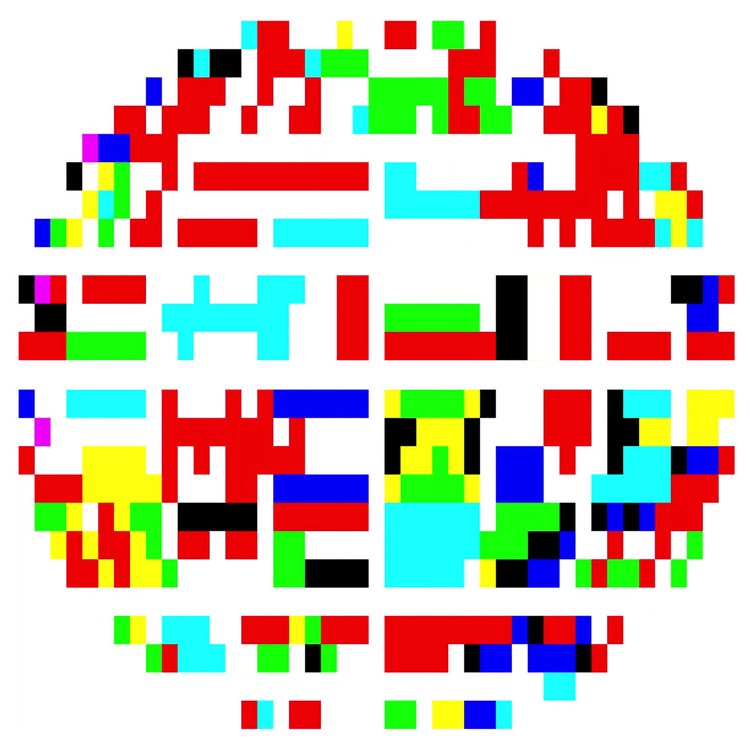
M: The interesting point you made in Order ~ Creativity, was the important place of mathematics in contemporary science. If you can’t come up with a mathematical formula, then it’s not a good idea, right?
D: True, the pursuit of ideas has kind of been lost in the name of mathematics, this is especially so in physics. In other sciences less, although, perhaps their ideal is to reach the stage that physics has reached, but they haven’t managed it yet, say in Biology. But in physics especially, the emphasis now is on mathematics.
M: The ancient Greeks had a group of people called Pythagoreans. Pythagoreans believed that numbers were the essence of reality, and the harmonies. They understood harmony as the ratio of lengths of strings, like music, and they felt everything could be done that way.
D: Yes, I know about those Pythagoreans. Nevertheless, nowadays, with the advancement of quantum theory; it doesn’t seem to be possible to get a clear physical picture.
M: Also in modern science, people like Heisenberg and co., said that mathematics is the essence of reality.
D: Well, now students will go through this interview, and naturally, without an equation it’s not very interesting. And if there is a play of thought that’s not mathematics, it is only interesting if it eventually leads to some mathematics. The notion exists, if you come up with an idea and you’re unable to immediately provide its proof, it’s not an idea worth pursuing.
M: So, it has become a rule that you have to be able to prove it quite soon?
D: Yes, a fairly common rule.
Supersymmetry (SUSY)

M: There’s a fresh development going on for some time now. It’s called Supersymmetry (SUSY) in string theory.
D: Yes, I’m following it. It is an interesting endeavor, because they allow free mathematical speculation, nevertheless it may take 20 or 30 years before it could be tested experimentally.
M: Nobel prize winner Prof. F, Prof. D, & Prof. D are doing interesting things in this field.
D: Yes, the emphasis is; if the community feels you have a body of mathematics, then you may work on this question.
-
Small Summary of the work by F & the 2D’s : The atomic nucleus is held together by a strong interaction that binds together the protons and neutrons. The strong interaction also holds together the quarks that make up protons and neutrons. This interaction is so strong that no free quarks have ever been observed.
However, in 1973 F. & D.D. came up with a theory postulating that, when quarks come really close to one another, the attraction abates and they behave like free particles, called: asymptotic freedom.
-
D: It’s constantly changing, the way people are doing physics. The general trend in physics also affected the way physicists communicate with one another.* Not to mention scientists in general, it has an effect on the language used in communicating scientific concepts. The language is now primarily geared to mathematics, with no use of informal language.
M: You’re talking about the equations?
"The equations : as if they come between you and reality."
D: The equations : as if they come between you and reality. The equations have an intrinsic structure, which make people feel confident, to presume it to be a better language for talking about matter, than ordinary language.
At least many people feel that way in physics.
Sobieski
M: You made a reference to, I think obscure, at least to me it was obscure: Biscay Cries Obscure Sobieski. Sobieski pointed out that words are never the thing. Could you talk a little bit about that?
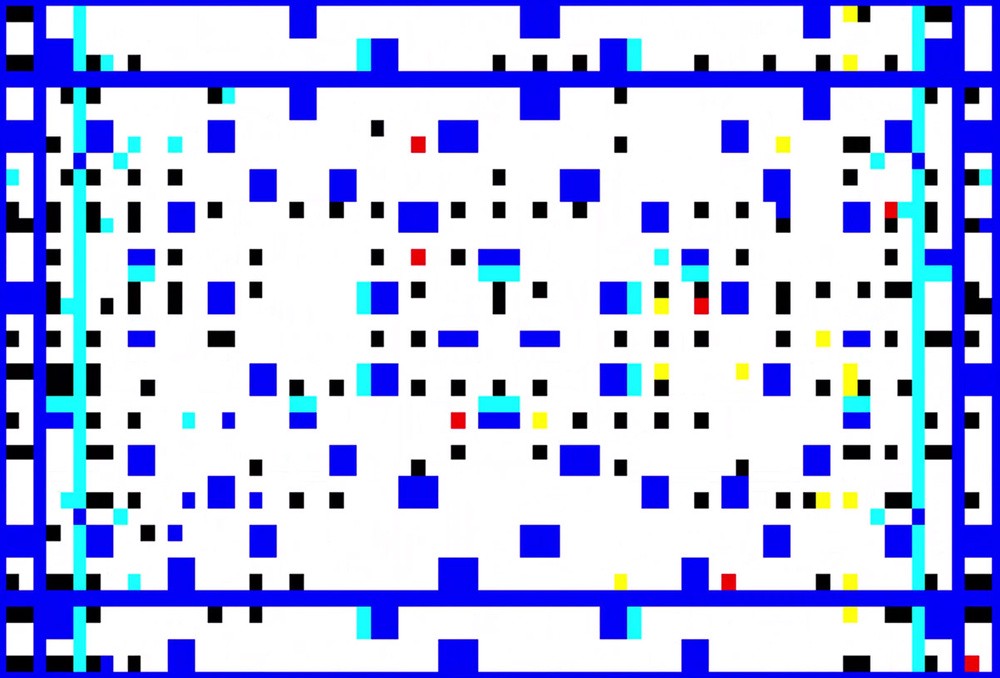
D: Referring to Alfred Korzybski, he published a lot in the 1920s. He was moderately known at that time. He wrote quite a bit, but the thing I would focus on was his statement that sums up his view: Whatever we say, — anything — it isn’t that.
"Whatever we say, anything, it isn’t that."
It may sound paradoxical, what Alfred writes; that it is not in the words. But even the meanings of words, they’re not an exact representation of reality. That might be similar for reality itself. It always goes beyond, it has more.
M: I think this is a very important point, because there’s a tendency to believe that at least someday, we’re going to arrive at an absolutely correct set of ideas.
D: Let’s take physics for example. There was a very well-known physicist, Stephen, I think… Hawking, who has said that physics will be finished in perhaps 30 or 40 years. After that, theoretical physicists could be replaced with computers. ♡ the ■ I don’t know whether he was talking, tongue-in-cheek, or he meant it for real, but it’s an interesting-thought-example.
Einstein vs. Bohr {a friendship}
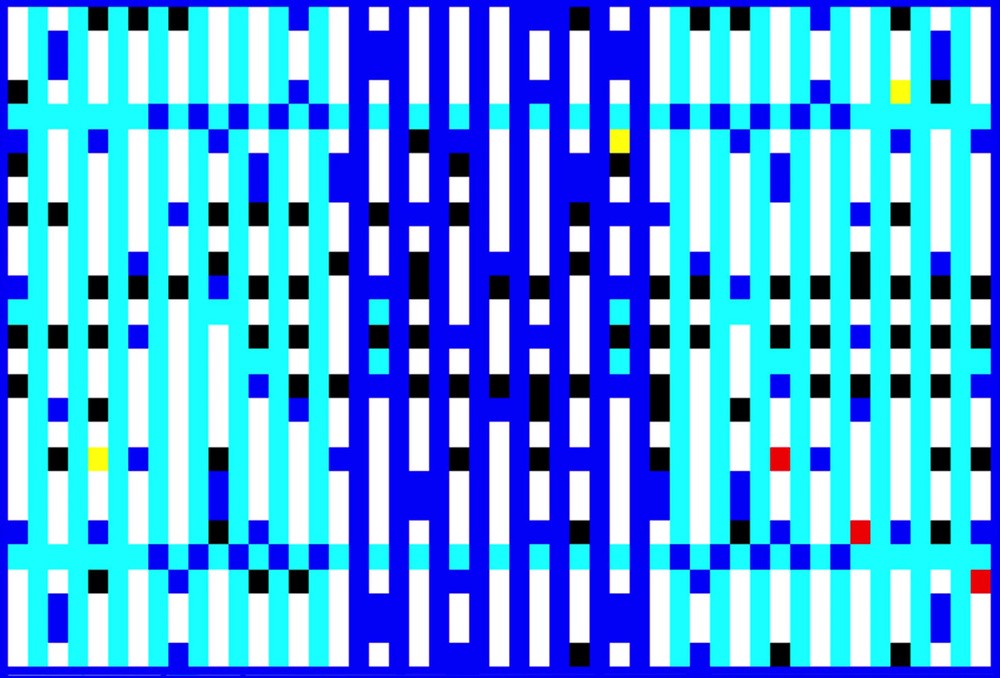
M: About the dialogues that took place between Niels Bohr and Einstein...How did eventually, these two geniuses, both idea generators, who started out as friends, became alienated from one another?
D: Largely because both focused on their own particular perspective, they weren’t able to bridge the gap. These two leading theoretical physicists of the 20th century became very close friends. Einstein & Bohr had a tremendous amount in common, but they disagreed really on one philosophical point.
Einstein's stance was; We would get an idea of objective reality in which the observer wouldn’t play a very big role. This is fundamentally different from Bohr. Bohr developed a view in which the observer played a key-role, as they are inseparable. Bohr stance was: The observer & the observed are the same.
Einstein called Bohr’s view a tranquilizer philosophy, and turned it against him. They talked about it, and talked for many, many years. They came up with arguments & counter-arguments, and gradually they had nothing to say to each other. Each asserted his position and defended it against the other, they got nowhere by doing that. After a while they probably got tired of going on with the discussion, they drifted apart.
Einstein lived @ Princeton, where he worked at the Institute for Advanced Study. One time Bohr was invited there, but they never met.
There was a mathematician at that time, Hermann, who thought, really they ought to meet. He arranged a party where he invited both men and their students. At that party Einstein & Bohr gathered at the opposite ends of the room, together with their students.
So they still didn’t meet, because they really had nothing to say to each other.
"When two people have 2 fundamentally different sets of values, about what constitutes the truth, they can’t really meet."
M: When two people have 2 fundamentally different sets of values, about what constitutes the truth, they can’t really meet.
D: When they did meet in the past, they argued about the scientific content, but that was not really the point at issue.
Order ~ Creativity
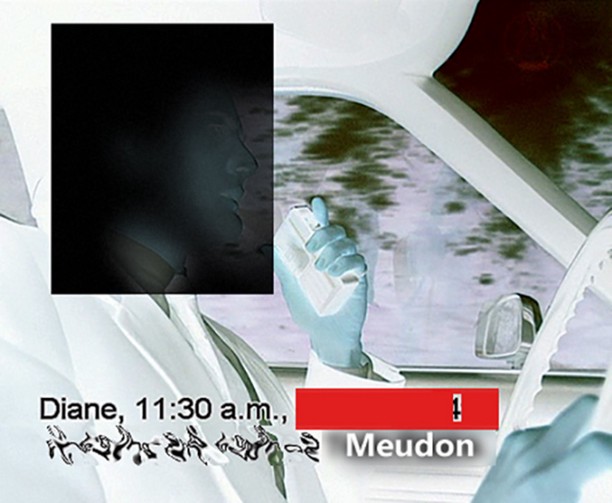
M : D{iane}, I think that most of us amateur scientists, as it were, when we look at mathematics, think of it as a very ordered process, very linear and very ordered.
DM {direct message}: That it is a linear process.., practicing mathematics,… is an urban legend {broodje-aap}; the final result is highly ordered, that’s true.
You’ve spent a great deal of time certainly in Order ~ Creativity, looking at order. Can you talk a little bit about order and what it is from your perspective?
D ~ M: I think order is a very fundamental notion. What’s so fundamental, it’s implicit in everything we do, and we can’t define it, because even in defining it we are using order; [Language].
M: How do you see this in relation to social constructs? Because the only way to transmit ideas is through language.
D: The order of society is a very vast thing. There was a change of order from the Middle Ages to the modern times.
The old construct was based on the notion of some eternal order of truth, and the new construct, which came into being after the Middle Ages, beheld a secular order, with emphasis on time & development.
M: I ask this, to show the significance of order for our whole life. We say we’ve got to do everything in order to do it right.
“D: I say this, to show the significance of order for our whole life. We say we’ve got to do everything in order to do it right.”
"X: I state this, to show the significance of order for our whole life. We say we’ve got to do everything in order to do it right."
M: Can you go a bit deeper on the subject, related to time?
M: You have the order of points on a line. An issue I discussed in the essay {Theo van Doesburg} : Introduction into Imaginational Theory.
D: But you also have the order of words, the order of geometric figures, the order of music, the order of thought.
M: And orders that constitute all these different orders.
D: The meaning of thought depends on its order. Everything depends on order. The most elementary features of order is just dividing things into categories; like distinguishing human beings from animals, the sheep from the goats, and so on. This appears in all the creation-myths. This earliest form of order was just dividing things that actually belonged together and keeping them apart.*
M: See more about its effect on society, in Abstract : Reality [A. Hitler] {dark pages}
D: From this very elementary notion of order we developed our order, by thinking of points on a line. [Chronos] Think of a Timeline; say a straight line, break it up into equal segments and now each segment is similar to the next, but it’s different in its position. The differences are similar, and that makes the order.
"D: If you imagine that each segment bends a little bit and the same bend is in the next one, and so on, you could form a curve."
D: Again there are similar differences. You can imagine that each segment bends a little bit and the same bends in the next one and so on. you could form a curve, again have similar differences. By this idea of similar differences you can get a more precise notion of order.
M: Clock — Time

D: I don’t know how far we should go here, but it reminds me of a story…
Wild animal
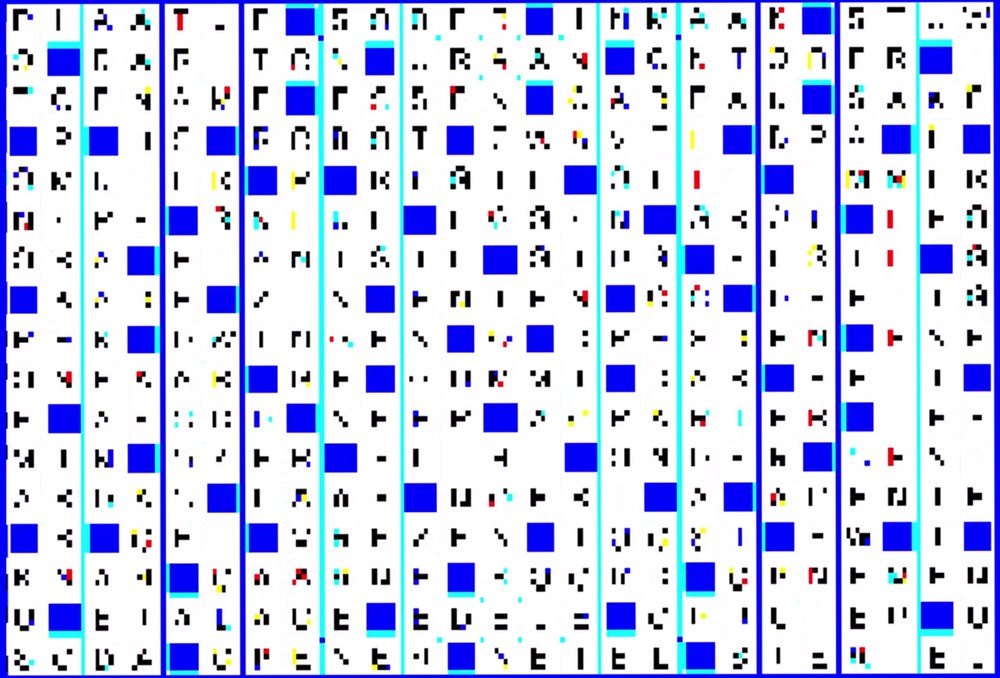
M: This story was cited in a book about Helen Keller; talking about order in [Language].
D: Yes, that story illustrated it well. Her teacher, Sullivan, approached the child as a wild animal; she had very little relationship with other people.
M: Her teacher played a game with her, right?
D: Yes, the child had to touch various objects and scratch the name of the object on her hand. The child later said; she didn’t see the point of it.
One day, in the morning, the child had to touch still water in a bucket and scratch the name on her hand. In the afternoon she had to touch running water, and scratch the name on her hand.
Surprisingly the child had a tremendous insight. She scratched, for two such different experiences, touching still-water & running-water, the same scratch.
For two different forms of the same substance, she marked the same.
The name; the things scratched on her hand, was actually always the same drawing, for every experience. It was the symbol of all water.
She suddenly had another insight; everything has a name. A name which tied up with the whole game that she’d been playing.

Now after that, she was able to start using words faster. She was making sentences in a day or two, she was communicating. Her whole character changed from a wild animal to a very cultured person. She went to the University, wrote books. She was the first deaf-blind person to earn a Bachelor of Arts degree.
M: So order was involved here.
D: Yes, the order of the concept: What is water?
To put it all in order and distinguish it from other substances, and connect them up, so she could relate them.
Chaos Theory
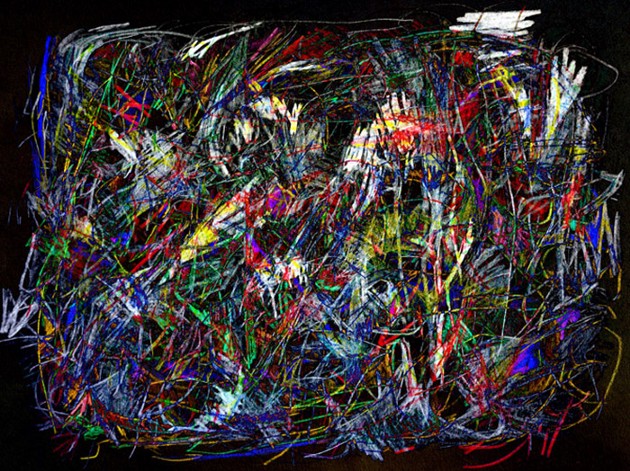
M: Speaking of order it brings us to a slightly new branch of science called; Chaos Theory. One would think chaos is the opposite of order.
D: What is your view?
M: My view of chaos…It is an infinitely complex order. I used to think of chaos as disorder, or lack of order. Many people still think that way, calling it randomness.
D: It’s been shown mathematically that you can make order curve. Curves that are more complex. There are curves where one difference is enough to tell what’s going to happen. Sometimes you need two or three or four curves, eventually it would become practically infinite, it would be an infinitely complex curve.
M: Can you explain this to us a bit more, with a small thought experiment?
D: Sure.

Imagine rolling a ball down an incline. If it is a flat incline it would follow a very simple order, a parabola, but suppose it were a very complex shape of hills and valleys, saddle points and obstacles.
The slightest shift of the ball would take it to a very different place. An extremely irregular path would take an infinity of elements to describe and determine, and this would eventually become what we call chaotic, but it’s still determinate. Therefore chaos I say, is both infinite as it is determinate; thus it's an infinitely complex order.
M: Like the fractals that occur in a crashing wave? The Japanese artist, Hokusai painted them, but you cannot see those structures with your bare eyes.
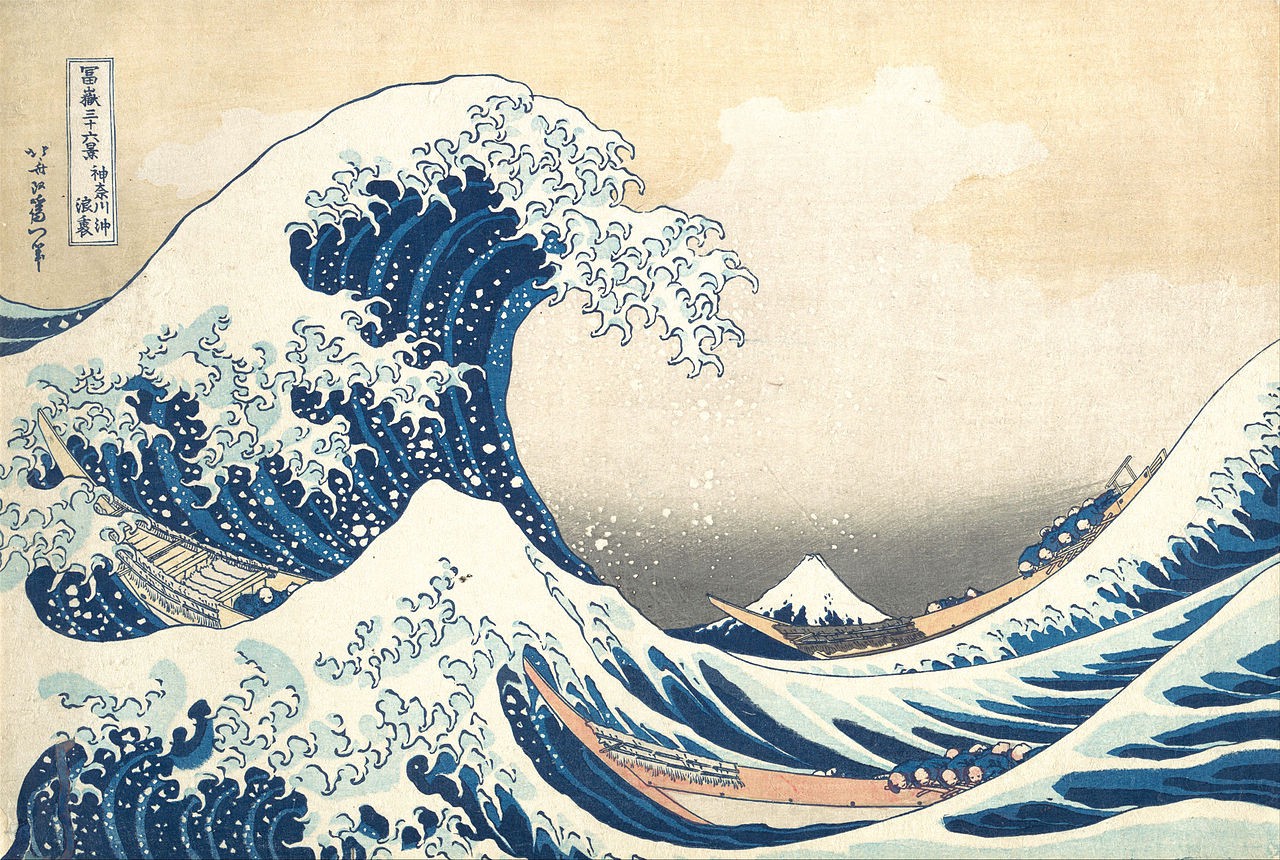
M: It may look chaotic, but there are all sorts of sub orders, swirls [fractals]. Eventually they get more and more complex and you will lose track of it altogether.
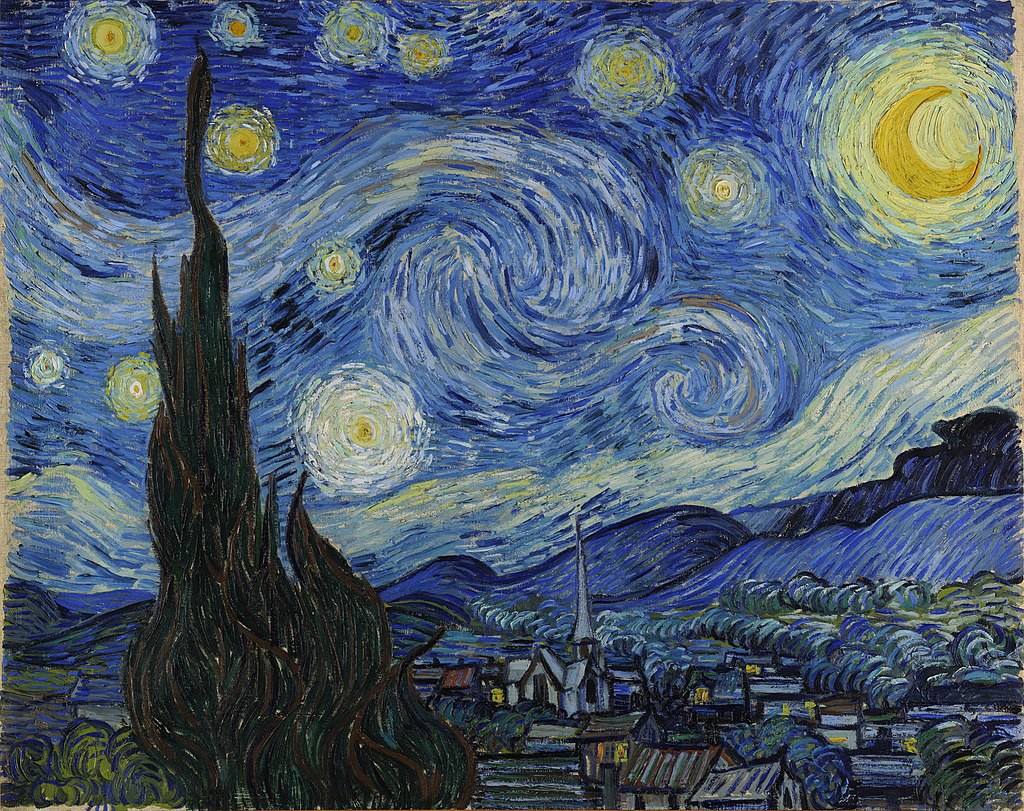
M: There is always some order.
Dr. X.: It’s almost like the mind totters, when you start going into those levels of order. As you watch an ocean crash.
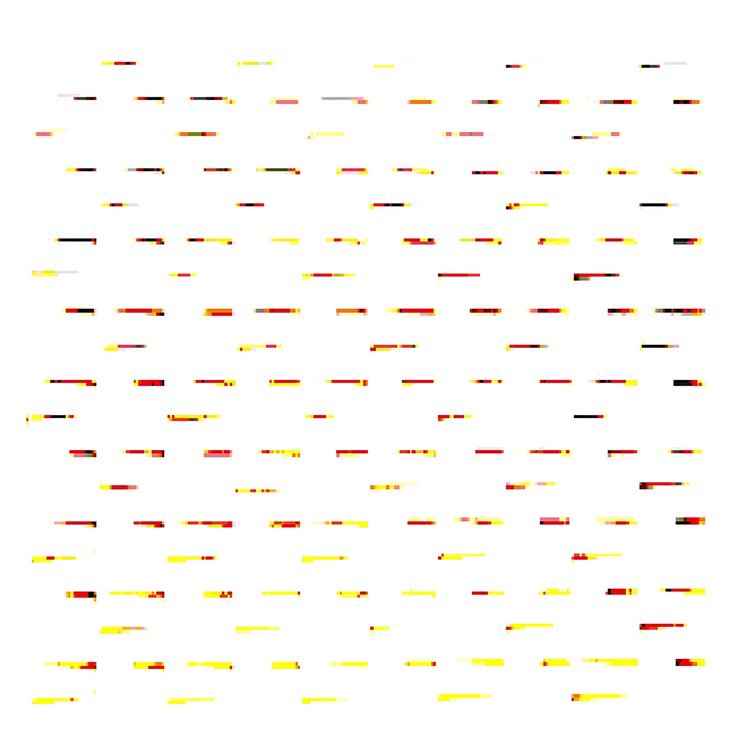
M: Well sure, it’s almost too much, glitchy.
Outsider: It is too much for us to grasp, logically and abstractly.
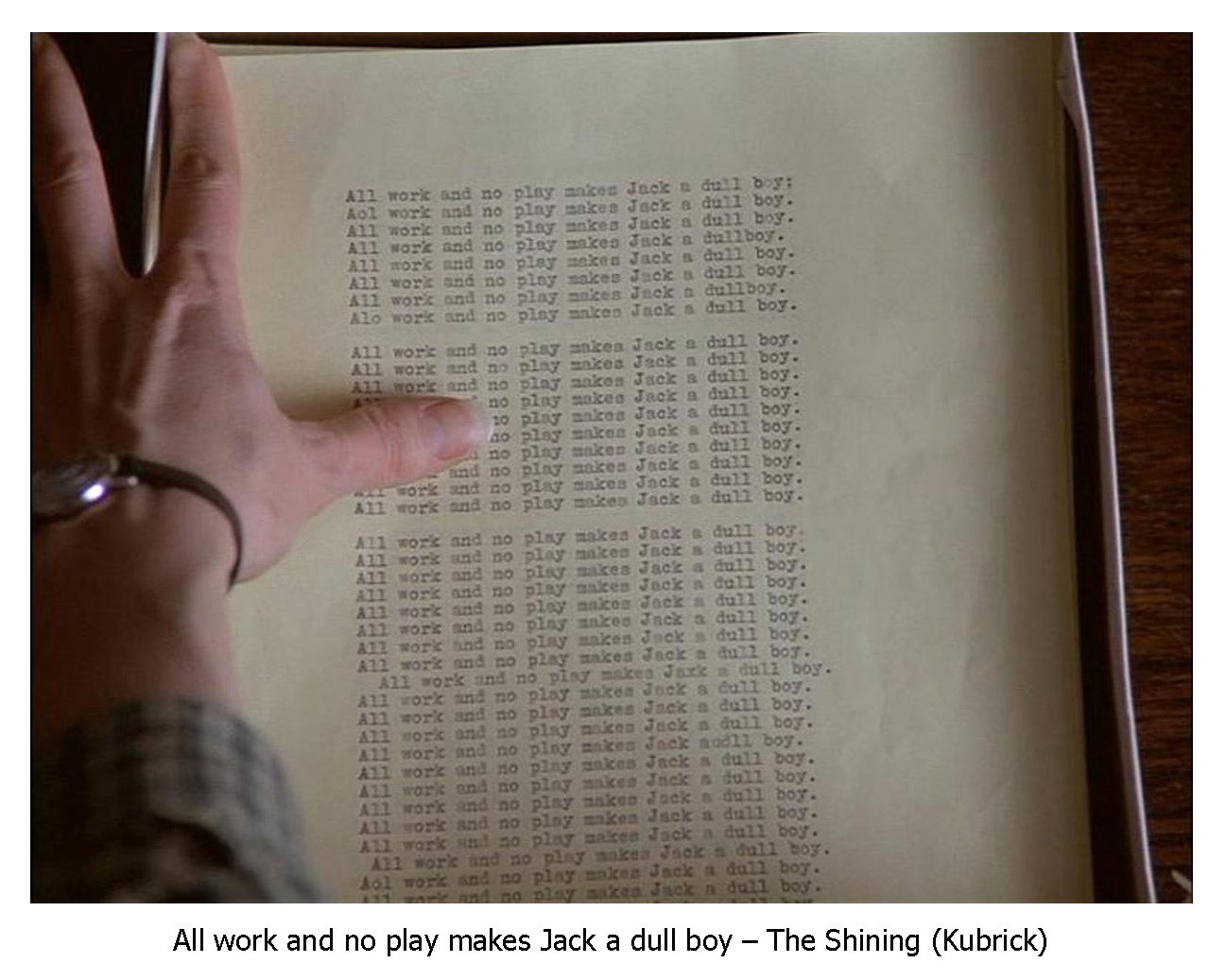
We can think about it as still-order, stillness. Maybe with very great-good-instruments, we could even demonstrate the order.
Engineer Ir. T : So with computers?
M: I think the algorithms used today are already very advanced; when you look closely, you will find hidden-patterns in the working of our mind. And it will go even faster in the near future. It will make paths for understanding unconscious thinking processes, but also give more insight in the third-stream; subconscious-creative-thinking, a term I introduced in the essay Abstract : Reality [Duchampian Chess].
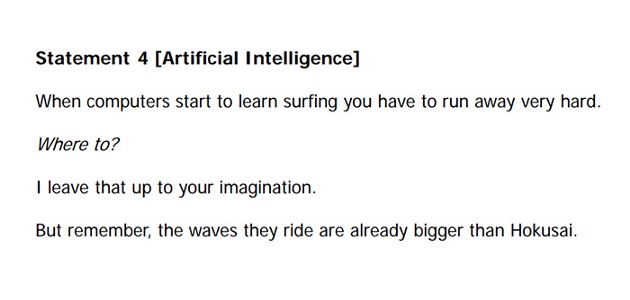
Randomness
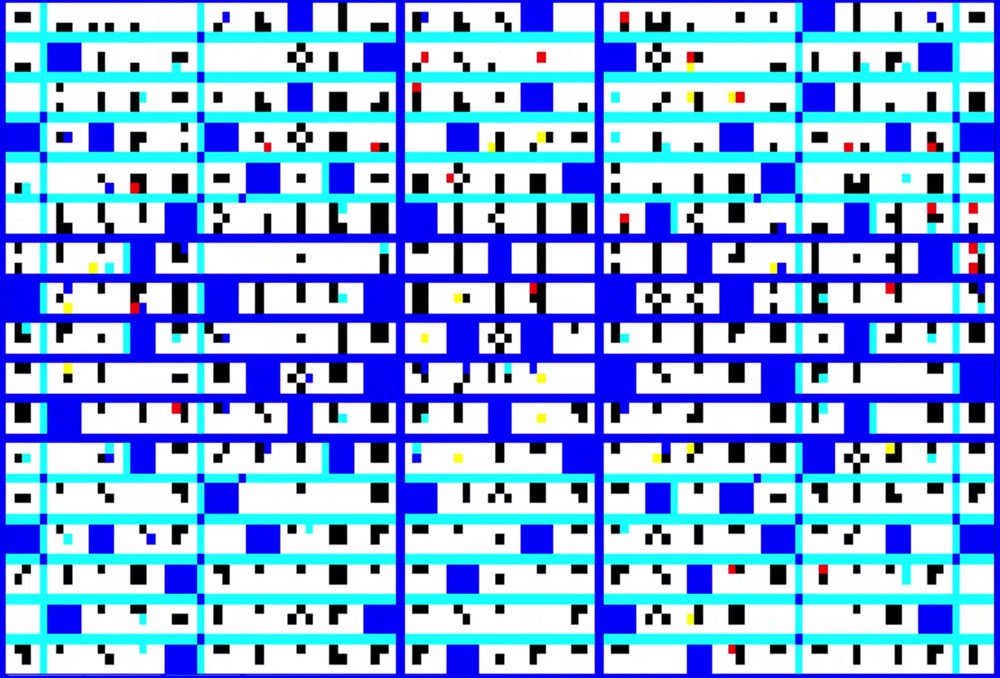
D: We have to free our mind from the idea that order is some simple thing that we could grasp.
M: In theater; whatever we say, in what order, is it not it, it is more than that. There may be order within chaos.
M ~ D: In chaos is a kind of order.
Prof. Dr. X: What about randomness?
D: Well it’s a form of chaos, which has certain properties. People have argued for a long time how to define randomness, but one idea is; you don’t find any regular sub-orders in it. The ocean-wave crashing on the shore looks complicated, but you will find little bits that are ordered like swirls and currents.
In a random distribution there aren’t any, for example people can generate random distributions by a computer. It’s a determinate generation, but there are no visible sub-order. However they may have average properties.

For example, If you have a gun and shoot a target, you never hit exactly the target [Proof]. The distribution of the shots has no visible sub-order, but it averages near the target, with a certain speed.
Casino
Money-man: It strikes me that if one could get close to the secret of randomness, that one might become a big winner in the lottery?
M: There is no secret really.
D: There was a story once of some mathematicians who went to Las Vegas. There was a roulette wheel, which they observed. It’s supposed to be random, but probably it’s not a perfect wheel and little bits changed on the bearing. So it’s slightly off-random, but then later a little bit more broke off the bearing.

By observing the sequence carefully they were able to win. They won many thousands of dollars, until the management became suspicious and threw them out of the casino. The casino bought a better roulette, with better bearings.
So in order to have a random roulette wheel, you need perfect bearings. But here, in everyday reality, there are always small deviations from randomness , but they change in such a chaotic way, that unless you’re very observant you can’t use them. Eventually it gets too complex to be able to follow.
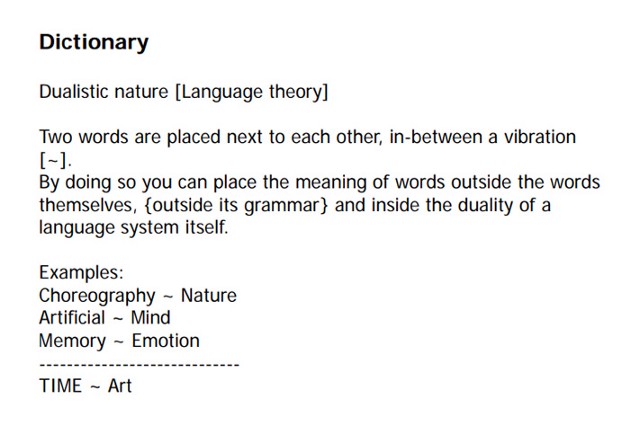
Randomness continued
№1: There is a poet essayist in Switzerland, his name is…, who writes essays and is a Kentucky-Mountain-farmer. I recall him writing something about randomness. Randomness is the scientist's way of describing the mystery?
M ~ D: Randomness is actually a kind of order, an infinite order, which we call disorder.
D: It would take an infinitely Deep-Mind to be able to see all randomness is order. But, if we don’t call it randomness, suppose we call it disorder, it would be very confusing, because it’s always got an order.
If you take any 1 random order it can always be distinguished from another 1.
So it’s confusing to talk of disorder, or lack of order, it can’t really demonstrate anything. If you say cancer is a disorder, that’s not true, it’s just another order, not compatible with the life of human-being.
Dr. Mrs. Y: I guess you would relate that the same way to mental-disorder?
M: In some way there’s an order there. As Shakespeare said; Method in Madness. That it’s the order of what we call disorder. If there were no order in disorder, medicine would have no hope.
"If there were no order in disorder, medicine would have no hope."
Two cylinders {brain}
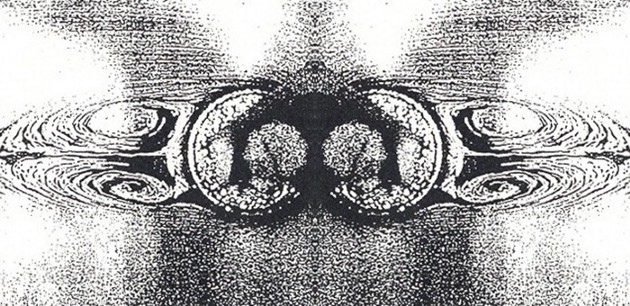
MD: This might be a good opportunity, as we are talking about order. Could you give us a description of your theory of wholeness? The experiment of the ink…, the viscous fluid.
M~D: This is the implicit or enfolded order. Consider two cylinders {brain} that are concentric.
The inner cylinder is held fixed, the other one is turned slowly and regularly. In between we place a viscous fluid, which may be glycerin. We put an ink-drop {traumatic experience} into that glycerin, insoluble ink.
Now, if you imagine a small element of glycerin, which contains that ink-droplet. Then the parts of larger radii move faster than the parts of smaller radii. So that droplet is drawn out into a very fine thread. As we turn right, the ink moves along with it, therefore the ink droplet becomes a thread, and after some time, apparently dissolves. At that stage you could say; it doesn’t seem to be there.
That it seems to have no order. {Chronos; turning clockwise} You would almost think it was distributed at random, but now you switch the process. What you do is; you reverse the motion {Memories}, turn it backwards slowly. It’s important that it is viscous or else it will diffuse and this won’t work.
But, if turned back slowly, every element of fluid will retrace its path. Until finally it all gathers together in a drop again. The ink-drop {Traumatic Outbreak} suddenly emerges to spread out again.
When the ink-drop was spread out you would presume it had no order, but there was a hidden order in there, which meant it would reform an ink-drop, not something else. I call that the unfolded order; I say that the ink droplet is enfolded into the glycerin, and it is unfolded by turning it around.
D: The word; implicate it means enfolded, and explicate it means unfolded. So I can call it the implicit-order.
M: I will re-call it into: Chronos slipping into Kairos.
Prof. Dr. X: How would that relate, say to the thinking process, to subconsciousness?
M: Explained above with {brackets}.
Human consciousness
M~D: I think that order is present in many places, but its core presence seems to be in consciousness itself. We may say that one thought implies two new thoughts, one which has the reverse route, waiting to be unfolded.
Then one thought enfolds another, so we have a sequence of thoughts {Chronos}, and they eventually unfold, just like the ink-droplets {Kairos}.
When we have thought, we’re not aware of the next thoughts coming, but in some sense we feel it’s there. Very much like the ink droplet in the glycerin.
D: Eventually It gets unfolded, so the next thought gets unfolded, and that in turn the next thought gets unfolded. As a series of ink-drops that were unfolding.
Mmm: Key-frames, such as in dementia. A process of Chronos slipping into Kairos, I will explain it more some other day.
Student Z: So in some sense there’s a source that we can’t really identify, but we know it’s there?
MD: Well, at least we’re assuming it’s there. We try to understand it. In science you make an assumption, and see if it will help throw light under the whole process.
Student Z: What if you use more than one ink drop, many ink-drops?
MD: You could put in one ink drop and turn it n times {Turning Clockwise}, then put in the next one, turn it n times{Turning Clockwise}.
The first one would be 2n times and then another one it would be 3n times. After a long time you would have a whole bunch, but each drop would be different because it was enfolded a different number of times.
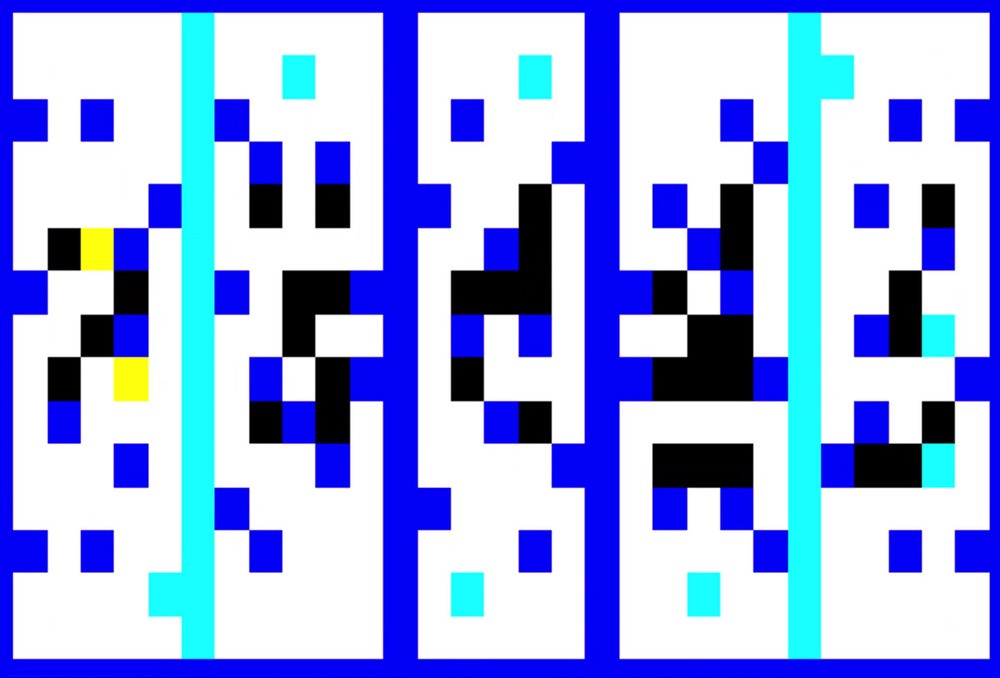
At first, they would all look the same; but you would see a difference when you look closer, because one drop would unfold, as you turned it back, then another drop, then another drop.{Kairos; Emotional}
M: Suppose the ink-drops were put in slightly different positions {time-frames}, they would unfold in slightly different positions, right?
MD: If you did it rapidly, you would apparently see a particle crossing the space {mentally-confused-state}, but in reality it was always the whole unfolding and folding back.
"M: This would be a view of wholeness, in which the parts appear as an abstraction into our perception."
This would be a view of wholeness, in which the parts appear as an abstraction into our perception. That we only perceive the ink when it’s fairly concentrated.
Memory ~ Emotion
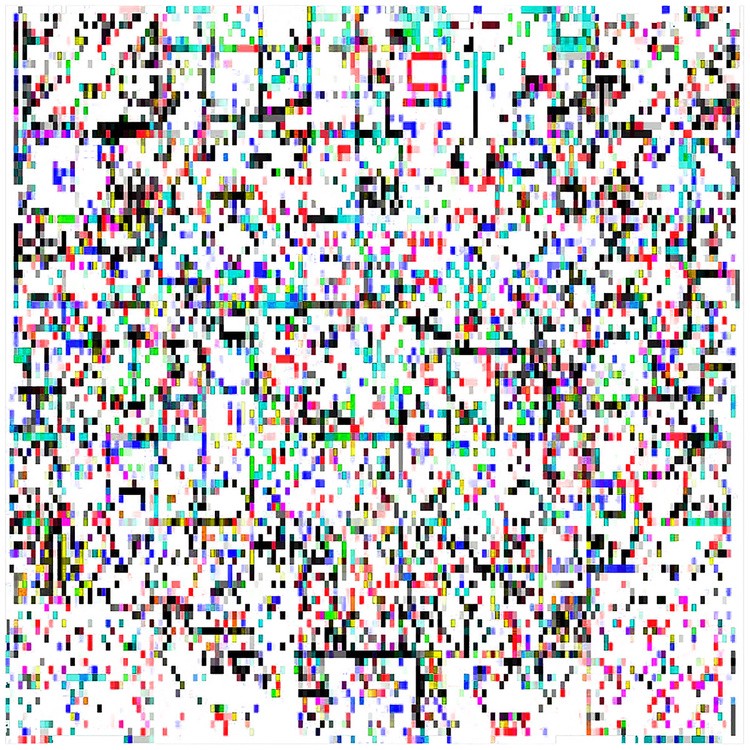
Monk: I know that you spent many years having dialogues, and doing mutual explorations with Jiddu. Perhaps this is a good time to ask you about the significance of those dialogues from your perspective.
Certainly when you talk about your idea of wholeness in the implicit-order, J.K. comes to mind, because of his views on our thinking process, what he called; the knowing beyond the mind ~ brain. I’d like to hear how you feel the significance of those dialogues from your perspective.
D: They’re related in some way to what I say about the implicit-order. To some extent the implicit-order was inspired by considering what J. was saying as well as other things.
"The order of thought is wrong. This is the basic reason why humans, and society are not working well, why there’s so much trouble."
I think J. was saying: that the order of thought is wrong, it is one of the basic reasons why humans, and society is not working well, why there’s so much trouble. He was saying that thought arises from memory, a response of memory. It’s rather like these ink-drops, you are not {yet} conscious of your memory.

When something happens, your memories responds to make a thought, which then stirs up other memories to make another thoughts. It is a process similar to what M. is talking about.
But M. is also talking about getting beyond that {subconscious thinking}. A movement of the mind which is not conditioned by memory {Chronos}, and which would not get into the difficulties that thought gets into {Trauma}.
M : How to get beyond that, how to learn subconscious thinking.
It would bring thought to order, straight or a rational order, cause, don’t forget, it’s always in some kind of order. If the mind were silent then it would not get into any disturbed state, what we have been calling a disorder {mentally-confused-state}, really a chaotic order. It would go into a coherent order.
Creativity {subconscious thinking}
I want to make the connection to the process of creativity. We think that somehow creativity comes out of thinking, when indeed that may not be the case. [AI-logic-systems]
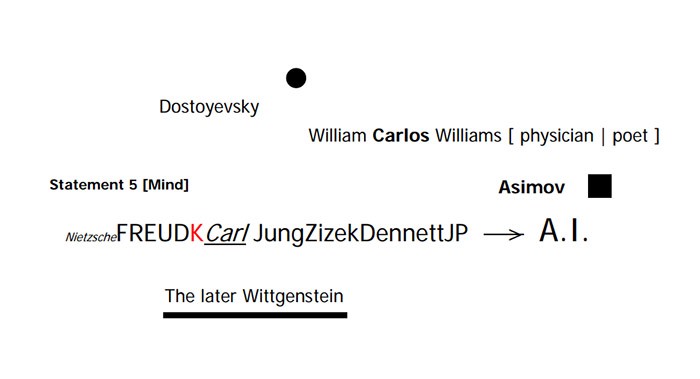
DM {direct message}: Creativity does not come out of thinking, though, thinking may be an instrument that helps express creativity.
First of all, I want to make a distinction between thinking and thought. Thought is the past participle of “to think”, it is what has been thought. Thinking becomes thought. We usually assume, when we finish thinking, it’s gone, but it is not.
Thoughts go into this implicit-order of the mind, the ink-drops I wrote about, it responds as thought. It affects everything, not only what you think, but also what you see and feel. According to this, if you think of somebody, if you’re prejudiced, you might presume somebody is no good, your enemy, you would see him that way.
So those thoughts that you may have had a long time ago, are still affecting you years later. That kind of thought is mechanical and not creative. A great deal of our thoughts are of that nature, it may even be destructive.
"That kind of thought is mechanical and not creative. A great deal of our thoughts are of that nature, it may even be destructive."
M: Some people figured out how to use these ingrained human mechanics, this thought-memory-mechanism, in a creative way; Abstract : Reality [A. Hitler]
The third-stream
Beyond that, there is a perception, a much deeper perception, which I say is the source of creativity. I call this the third-stream. (Introduced in the essay Abstract : Reality [Duchampian Chess].)
This stream is nested in the implicit-order (a concept developed by scientist David Bohm). So if you think of an ordinary stream, you go from the source all the way down and you see the whole stream at once, from way up in the air. Then you understand how it all works, about time. You arrived in the third-stream; a subconscious state.

When you have something floating in this third-stream, you will see it floating down, passing time. You see the whole stream from the source all the way down, and if there’s pollution there, you can see it’s coming in, there right at source, and how somebody’s trying to get it out, further down. Similarly I say the whole mind is in that kind of stream, with a source. The third-stream however is not in Chronos-Time-Space.
M: It is stillness.
D: It is in the implicit-order, it’s everywhere.
DM: “Why we cannot allocate the position of memories in the brain.”
So,it’s everywhere, but in different degrees of subtlety. Getting closer to the source can lead to a more subtle process of the mind.
Does any part of the stream really give you a view into the whole stream?
D: Yes, every part of the stream gives you a view into the whole, but by being open to it you’re led to the source. Every part comes from the source, ultimately.
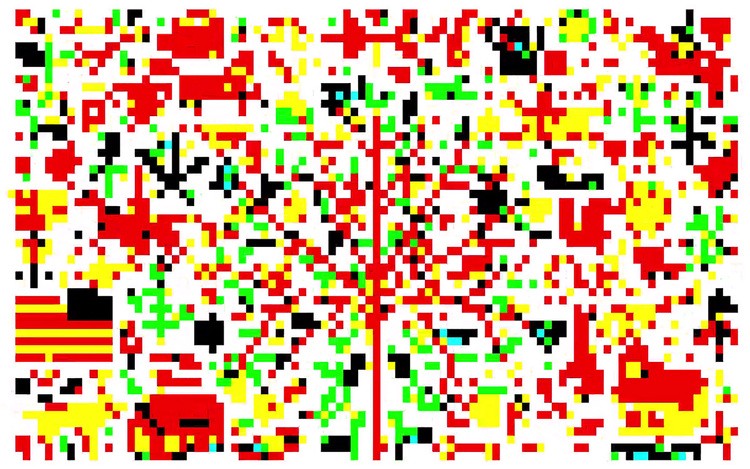
You could make a picture of a tree growing out into its branches. The branches seem to be separate, but that’s by thinking in an abstraction. It’s the thought that abstracts them as separate, as sets, sub-set. They’re all coming from this one source in the trunk, the roots, and they grow through a fractal-composition.
MD: There’s similarity in the origin to the whole mental process, which is infinitely subtle from which, I say, creativity comes from, intelligence, whatever you want to call it.
M: To take your metaphor; if we’re caught down the stream of thought, where we are basically living out the kind of patterns that we create in our lives…Then we never really get an opportunity to truly be in the higher part of the river. In the third-stream, where real creativity can take place.
D: The source of creativity is infinitely subtle, and requires attention; awareness and attention. Awareness and attention are more subtle mental processes than thought. Particular attention is extremely subtle and has no fixed form. We can put our attention into this stream of thought, or we can put it into something more subtler.

Media-men: WAR IS PEACE, FREEDOM IS SLAVERY, IGNORANCE IS STRENGTH!
There is a rising attention deficit among children because of a waterfall of confusing-media-streams; in the future I will explain this process in more detail. Not only children have this problem, but also adults.
Fictional Reader: Yes..I guess very few people would make it till the end of this interview.
Musical Strings
M: One of the examples, particularly in the creative process of artists and musicians; to use your metaphor of the stream; that some artists, especially musicians touched the whole stream.
D ~ M: Mozart, that idea seems fairly well-established, was able to see {touch} the whole theme at once. He was able to play out a composition directly. Others seem to develop parts of this “human capacity”, because it’s a human capacity after all, but yet there are internal differences.
Take Bach for example. Bach would play parts, but also touched the whole order, but it came to him a different way.
M: Floating in the third-stream, so he could play it out.
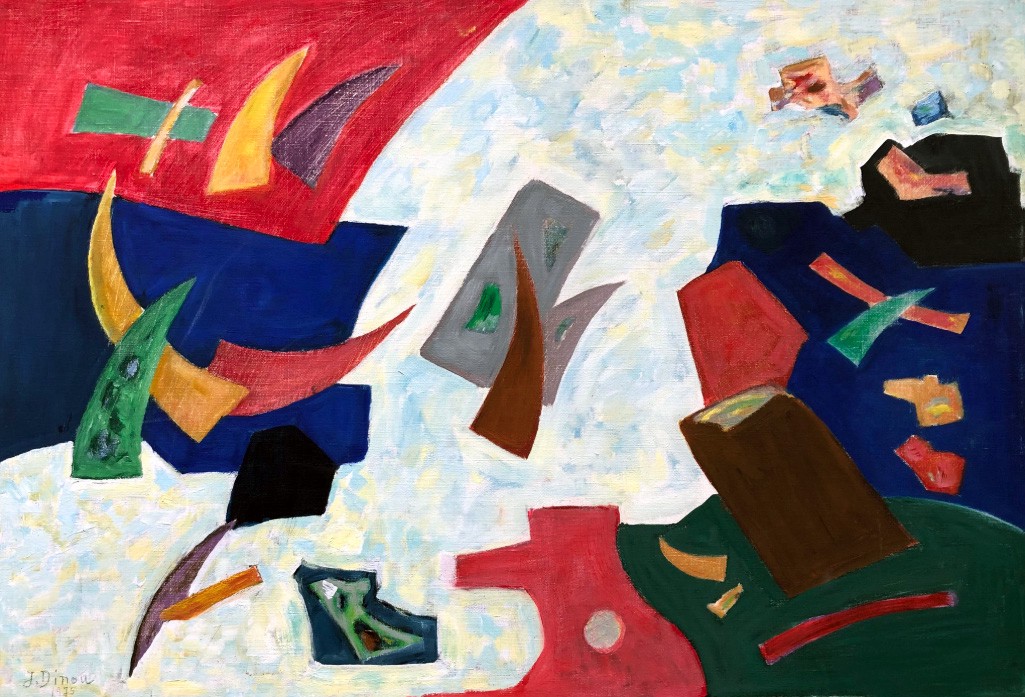
D: Others, such as Beethoven, had to rework it, but still Beethoven was always working from the source, even as he reworked it. You must understand, an artist who plays it again and again, isn’t doing it mechanically, he’s still reworking from the creative source.
"An artist who plays it again and again, isn’t doing it mechanically, he~she’s still reworking from the creative source."
D: Again, your example of the third-stream, which I think is an excellent metaphor. If you’re in that, the higher part of the stream and thought, — the subconscious mind — , then you have a particular way of perceiving, of what it is that you’re experiencing.
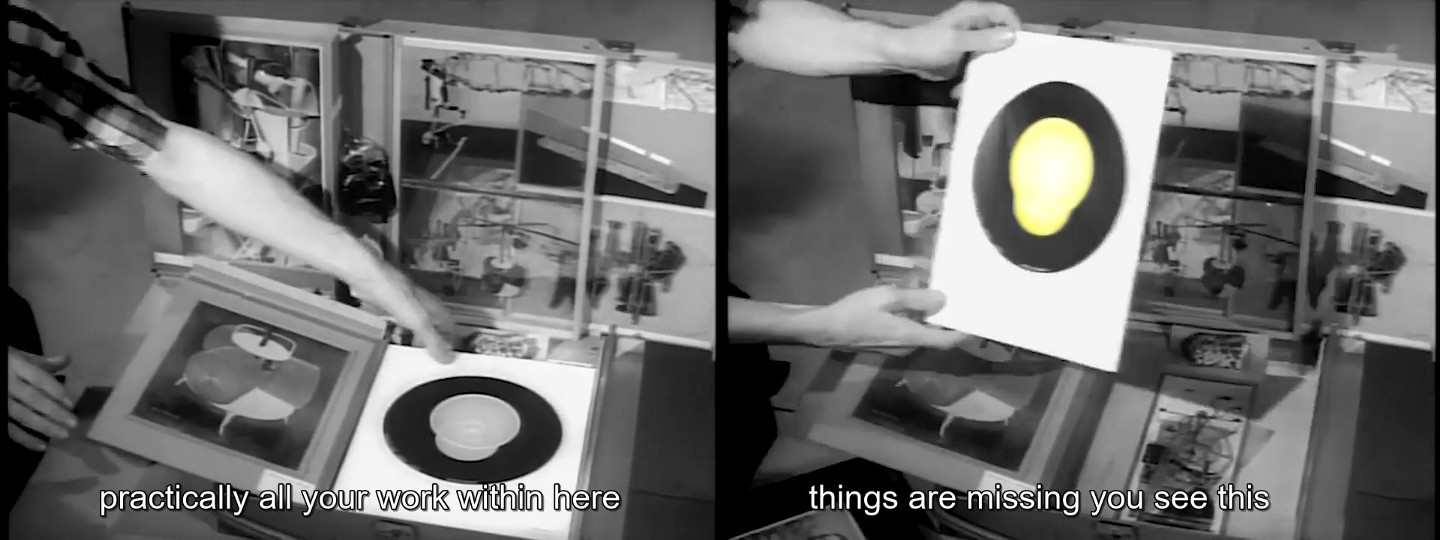
So, like listening to music for example. You use the example of discs of music, and how sometimes when we first hear new music,or see new art, it doesn’t sound like there’s any order to it. We can’t understand it, until we can get the context, or move from downstream a little further upstream.
D: Yes, that’s very interesting.
Different, new kinds of arts, such as Mozart’s compositions, new combinations of notes, were thought to be dissonant. But, after a period, people were able to move further upstream and see the harmony in it. The {musical, artistic, social} thought of a certain period would define an expectation of harmony in a certain form.
"The thought of a certain period would define an expectation of harmony in a certain form."
Remember, It is not that simple, cause if you just go out of the current, arbitrarily, you will get chaos. But there’s a way of going out of the form that still leads to subtler harmony. In a similar way new forms of art appeared, like Impressionism, that produced a violent reaction among the viewers, they thought this was rubbish. The case is, they were still seeing it through the old lens, the old idea of what art should be.
Gradually, some people learned that you have to make a creative step yourself. The viewer also must make a creative step to get into that stream, further upstream to see this new form of art.
The importance of Creativity in Society
What seems to me significant here, is that you as a scientist and a physicist are coming up with a scientific way of looking at creativity, as we would understand it in contemporary society. A definition and view of how we actually perceive the world, and think. How we are more creative or more destructive, depending on what part of the stream we’re in.
M ~ D: Yes, my interest in science has always been part of a larger interest, which is a storm in the natural philosophy, and even beyond nature, into human beings, in society. I regard it all as one unity.
"Creativity is essential for order. If we are not creative we’re going to be destructive, because our order becomes rigid and mechanical, and it no longer fits reality."
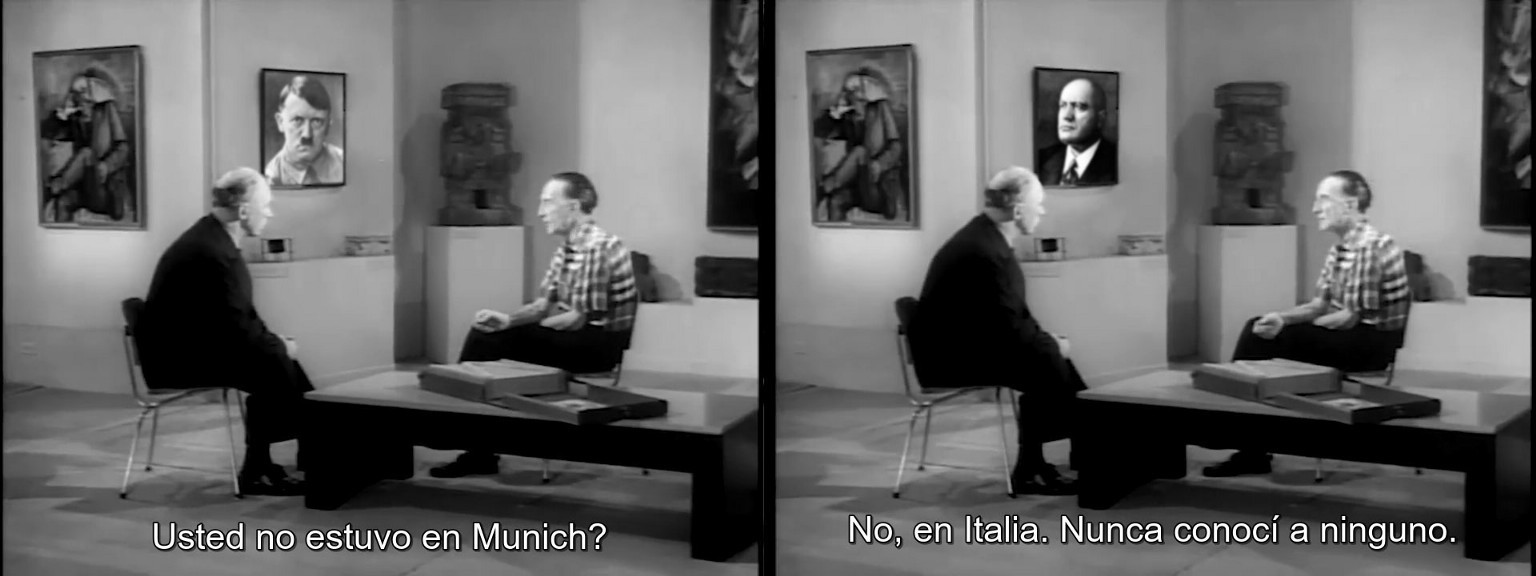
Creativity is essential for order. If we are not creative we’re going to be destructive, because our order becomes rigid and mechanical and it no longer fits the reality. We can see the example of many institutions around us, where that kind of rigidity has occurred. I don’t need to explain any further examples, but also individual human beings can easily become rigid and mechanical. Not only un-creative, but also destructive.
How to learn to Swim, to be Creative
![]()
A child and his father at the Stedelijk Museum Amsterdam, looking at art. (left) Super Miró (right) Blue swimmer, 1990 ~ 2019, M.©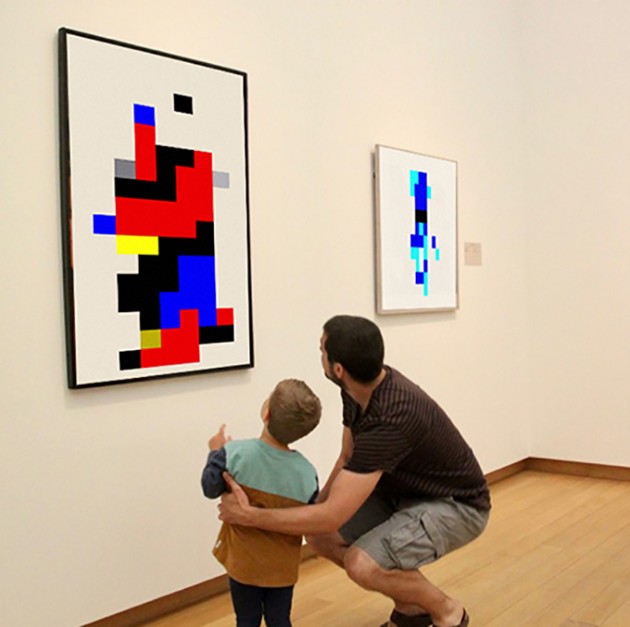
A reader who made it till the end: How can we get upstream instead of hanging out downstream?
J : M. is someone who’s been studying the whole river, the implicit-order and the third-stream for many, many years. M. give us some suggestions about how we can get a little bit more upstream more often.
>00> Well, going upstream means toward creativity and away from the mechanical repetitiveness, the deaf array. It would not be appropriate to give a mechanical prescription to get upstream, because it’s a constantly dynamic changing stream. It will never be the same, not only in time, for yourself, but also for other people. What I could say, make a kind of map of what I’ve seen, …wait, it may be a bit different from yours.
So maybe you could create your own map? So you get an idea how to swim in the sea.
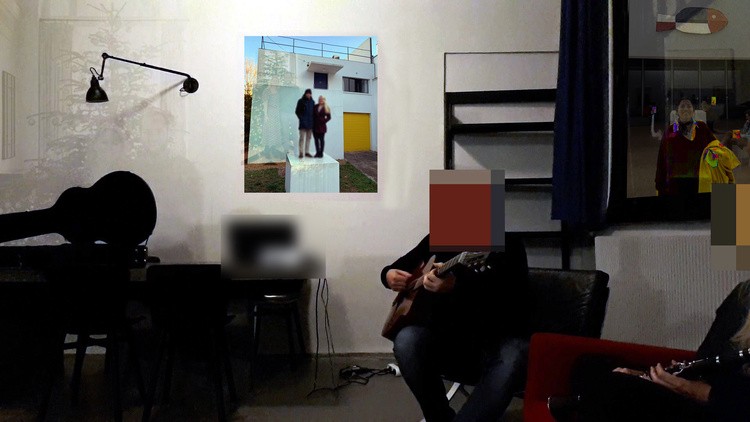
"There is not an exact set of prescriptions, it depends first of all on seeing the value of doing this."
There is not an exact set of prescriptions, it depends first of all on seeing the value of doing this. Nobody will do it unless they can see it’s important, but if you do see the value of it, then the first point is to visualize some of the negative features that stop you.
"For example the attitude of rewards and punishments will stop you, because you’re interested in the creative act itself."
For example the attitude of rewards and punishments will stop you, because you’re not interested in the creative act itself. You only want whatever the reward is, which has nothing to do with the act. It will tend to take you off, so therefore you have to be interested in it for its own sake. Then you have to look into the things that are keeping you out of it, such as the repetitive patterns of thought. Become aware of your assumptions.
Capture the flag
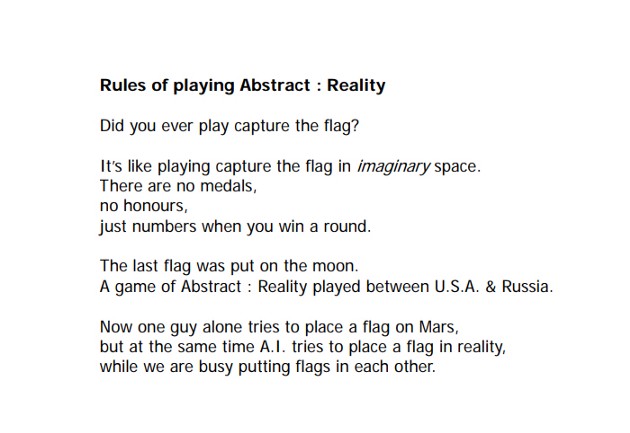
Many discoveries in science and art were made possible by people getting free of certain assumptions, assumptions that are commonly held. You have to be sensitive to them, and it’s hard to give a prescription for that, but I say one feature which I emphasize very much, is really crucial, is attention.
But attention, not only to what’s outside, but to what’s inside, to the factors that are getting in the way. The kind of feeling inside, of being stuck on certain ideas. The sense of security and insecurity, that moving into a new area will make you feel insecure perhaps, and staying in the old area may make you feel secure. This may all be a personal illusion. You have to pay attention to that.
M: Attention is a very subtle thing, compare it to a scanner.
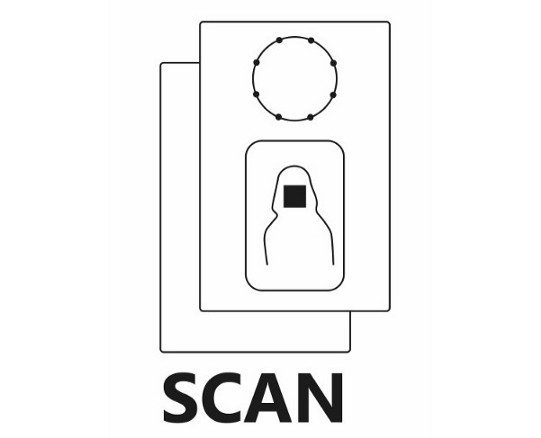
{-3} Leaving both items on the scanner, excerpt from Library, M.© 2019
"It’s been acknowledged that the eyes scan objects."
D: It’s been acknowledged that the eyes scan objects. Picking them up, it may be thought that somehow, whatever is {received}in the brain; thought, feeling, perception; that sensual perception. It’s being scanned from a higher and more subtle level, to bring it to a whole.
We could call that attention going to more and more subtle levels, leading you into the stream. It all depends on the quality of attention. The attention will bring you far into the stream which is the source of creativity.
Ancient Wisdom vs. Modern Strategy

The notion of attention has been more common in Eastern philosophy than in the West, there is meditation. I’ve been told that in ancient India, an artist would spend several days getting into the right frame of mind by meditating, before he would attempt to start doing anything.
M: Interesting, because in our society. If we’re going to be creative, we go to a seminar.
"If we’re going to be creative, we go to a seminar."
D: What happens is that this formula-thinking has also penetrated the process of how we think creativity happens. So that we can learn a formula about the way it works, or the way to do something, as a certain way.
M: Like all the self-help-rule books and websites.
D: Yes, it has been exploding in recent years, crossing all domains of life.
The first insight you gave in response to my query about how we get upstream, that there is no mechanical answer to creativity, because it’ll be different for each individual person. It’s kind of recognizing those paradoxes, and being willing to hang out with it, that allows us to be in the creative space.

D: Yes, the principal barrier to creativity is the mechanical process, which has its use, but overused, it becomes part of us. Instead of just a tool, it becomes to dominate us and our whole psyche. We have to be aware of this mechanicalness we are stuck in, in our Hypermodern-Society.
The importance of Dialogue
Student Z: I have a question…Thus thinking is the problem?
M: Thinking tends to become mechanical yes, but there’s subconscious-creative thinking that is not mechanical, that comes from the source.
Nevertheless, when we just turn over all thoughts and patterns, and the formula, it may tend to become mechanical. Sure, it will handle a certain range of problems, but it is not really creative.
M: One of the things person P. wrote together with person P. is: the importance of dialogue.

"Dialogue can loosen the collective socio-cultural rigidity that holds all of us in its grip."
Dialogue can loosen the collective socio-cultural rigidity that holds all of us in its grip. We are held rigidly, by means of thoughts and assumptions that are circulating around that we are not conscious of.
"The Brexit-Euro conflict, Korea-conflict, USA-China conflict, Israel-Palestina conflict, Immigrant-Occupant conflict, Religion 1-Religion 2 conflict, on and on."
"Prejudice against people of a certain kind."
For example if there is prejudice against people of a certain kind, very often a child would pick that up, without even being told about it, just by the way people behave. Saying that all people of that kind are no good, that there is something wrong with them. Then this child sees one particular person, he’ll unconsciously see through that lens. He’s being held rigidly.
The same sort of prejudice, with the same sort of pre-judgments, which is the root of prejudice, would arise in all sorts of ideas about science and about art, about politics, about society. These ideas circulate subliminally, and you don’t know you’ve got them.
"If people will sustain this kind of dialogue, the whole state of mind and the culture can alter."
D: If we have a dialogue, the perm point of a dialogue is not just an exchange or just a trade off, negotiate points. It’s rather the attitude that is important, the spirit. That we are going to look at assumptions, our own as well as other people, and suspend them, examine them. That’s often very hard, if you’ve got a prejudice you find there’s a tremendous resistance to examining such assumptions.

But if we take it seriously enough, then our assumptions will be revealed, often by somebody else. They can see them better than ourselves, and vice-versa. So every time you see a mistake of that kind, whether it’s yours or somebody else’s, everybody gains.
It’s not a case of somebody winning or somebody losing. The point of a dialogue is not to get your point across or to win, but rather that we are exploring these assumptions and we all gain. That we all, by seeing them, are getting free of them.
"That will develop a spirit of fellowship, and eventually friendship."
That will develop a spirit of fellowship, and eventually friendship. If people will sustain this kind of dialogue, the whole state of mind and the culture can alter.
M: Well, I think this dialogue has been an example of what you’ve just been talking about, because surely it resonates with me as your fellow dialoguer here and I’m sure it will resonate with readers, what we’ve been dialoguing about.
David, I want to thank you for joining us today.
D: I enjoyed it very much, thank you.
I’ve been speaking with David; scientist, physicist, author of wholeness in the implicit-order and co-author with David, of a book entitled Science Order and Creativity; a dramatic new look at the creative roots of science & life, published on paper by B. Books.
My name is M., on behalf of the Triple-A Society, and all those who are members of friends of new dimensions. I’m wishing you well, and do create more waves that go on infinitely.
{Bohm} : The Future of Creativity. All notes are linked in the text {integrated}. M. Production [Educating Creativity]
© 12. 2019. Triple-A Society